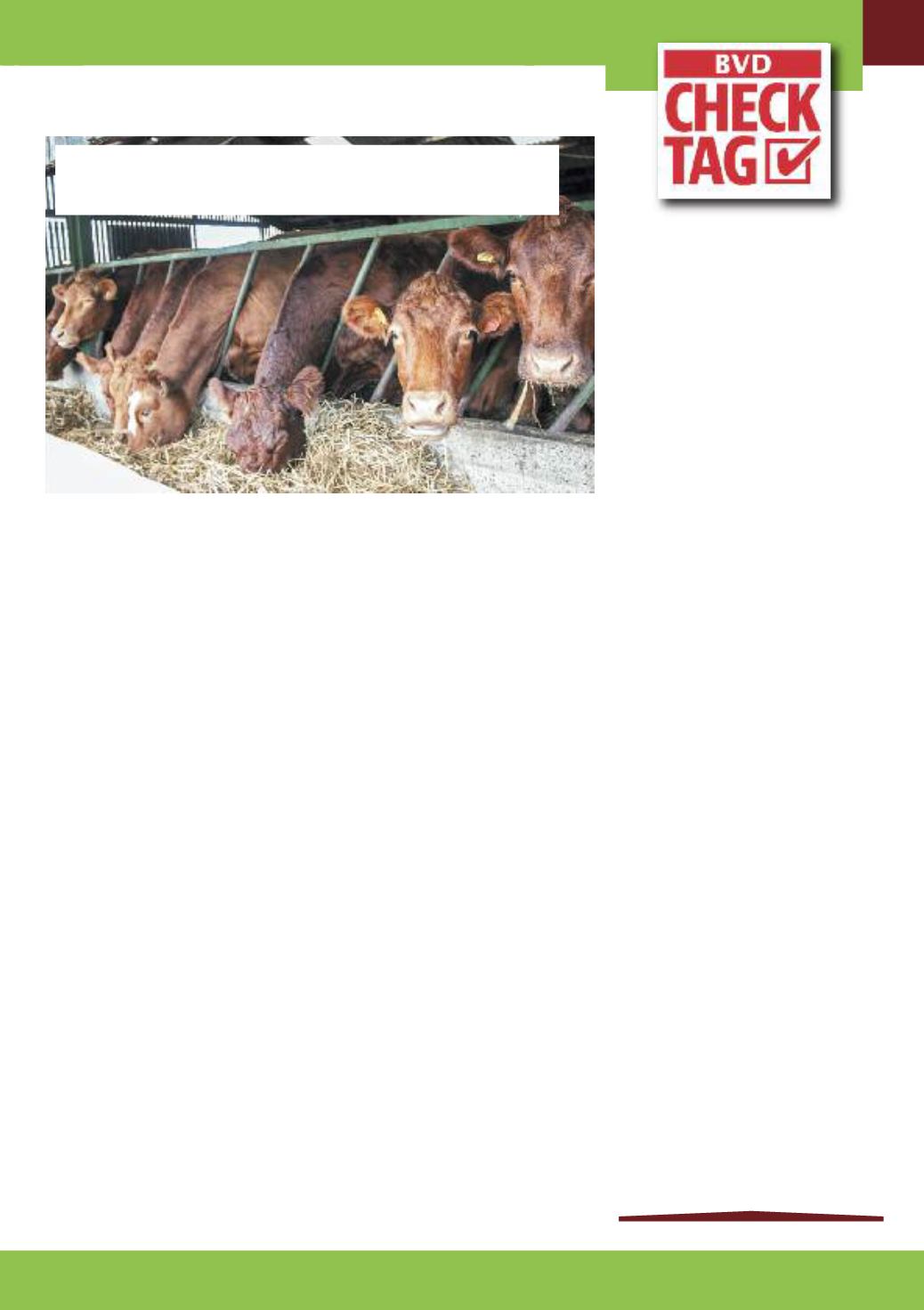
LIVESTOCK MATTERS - BVD SUPPLEMENT
tissue samples from young calves, as an
additional safeguard against the threat
of this disease.
The relatively new technology enables
a sample to be taken as the ear tag is
attached to the calf, with the sealed
capsule containing the sample then
being sent away for laboratory analysis.
This system is central to a new scheme
that has been developed by XLVets.
Called BVD Check Tag, the scheme
aims to promote the testing of calves
and provide verification of a negative
test result for the disease through a
central and fully accessible online
database.
“The tests will pick up any PI
(persistently infected) calves which can
then be taken out of the herd to avoid
spreading the disease,” explains James.
“This gives us added peace of mind.
“We have at least 10 neighbours with
cattle and double perimeter fencing is
not an option. We also send some
heifers away from home, although they
are not mixed with the other cattle on
the farm.
"I think the test should be compulsory -
it's a no-brainer. If everyone tested and
vaccinated for four years, there would
be very few cases of BVD in the country.
We also test annually for Johne’s.”
Andrew said: "When BVD is under
control in a herd, health and fertility
will improve across the board. It is most
important to know your herd's health
status and, in particular, your BVD status.
"If the disease is present, it is hugely
expensive and time consuming to
deal with. By taking a more proactive
approach and putting in place a
control programme with testing and
vaccination, if appropriate, it will free
up time for other important
management tasks on the farm. It’s
important to carry out vaccination
correctly, however, as failure to do so
can jeopardise the level of protection.
It is important, for example, to make
sure that heifers receive the full primary
course of vaccine at least four weeks
before the start of the service period.
This is vital to ensure all breeding
females on the farm are protected.”
In Andrew Crutchley’s opinion, England
is in danger of being left behind in the
fight against BVD.
"Scotland has started its own campaign
which is now in phase three, with a
combination of measures in force,”
he explains.“These measures include a
ban on knowingly selling/moving cattle
with BVDV, the need to declare a herd's
BVD status before sale, and restrictions
on untested herds and animals.
All the male calves at Kitcrag, with the
exception of four or five with breeding
potential, are castrated at birth and are
sold either finished or store, principally
off grass at 15 to 16 months old each
September through North West
Auctions J36 Mart.
The emphasis on veterinary work on
the farm has shifted over recent years
towards preventative and proactive
measures with most of the cost now
on vaccination, blood testing and PDs
for females.
The ear tissue test, which James carries
out at tagging without veterinary
involvement, costs £4 per animal. The
entire herd at Kitcrag is calved over a
tight nine week period starting on April
20 to help minimise work with half
calving inside.
Andrew said that up to 90% of
Westmorland Veterinary Group’s beef
and dairy clients now know their herd’s
BVD status, and, of those, 95% would
vaccinate against it.
“It’s one of the key questions for
breeders buying in herd replacements -
what is the disease status of that herd.
“By tagging and testing youngstock
you are securing the future of your
herd, especially in closed units. It means
that future breeding stock are clear of
BVD and that you are not perpetuating
the problem through the herd.
“It is also important to test calves
which have died because they could be
a PI. Not testing dead calves could be
where the system fails because it slips
through the net.”
All breeding animals in the herd are routinely vaccinated against
BVD and all calves are tested using the new BVD Check Tag ear-tag
tissue sampling procedure.


